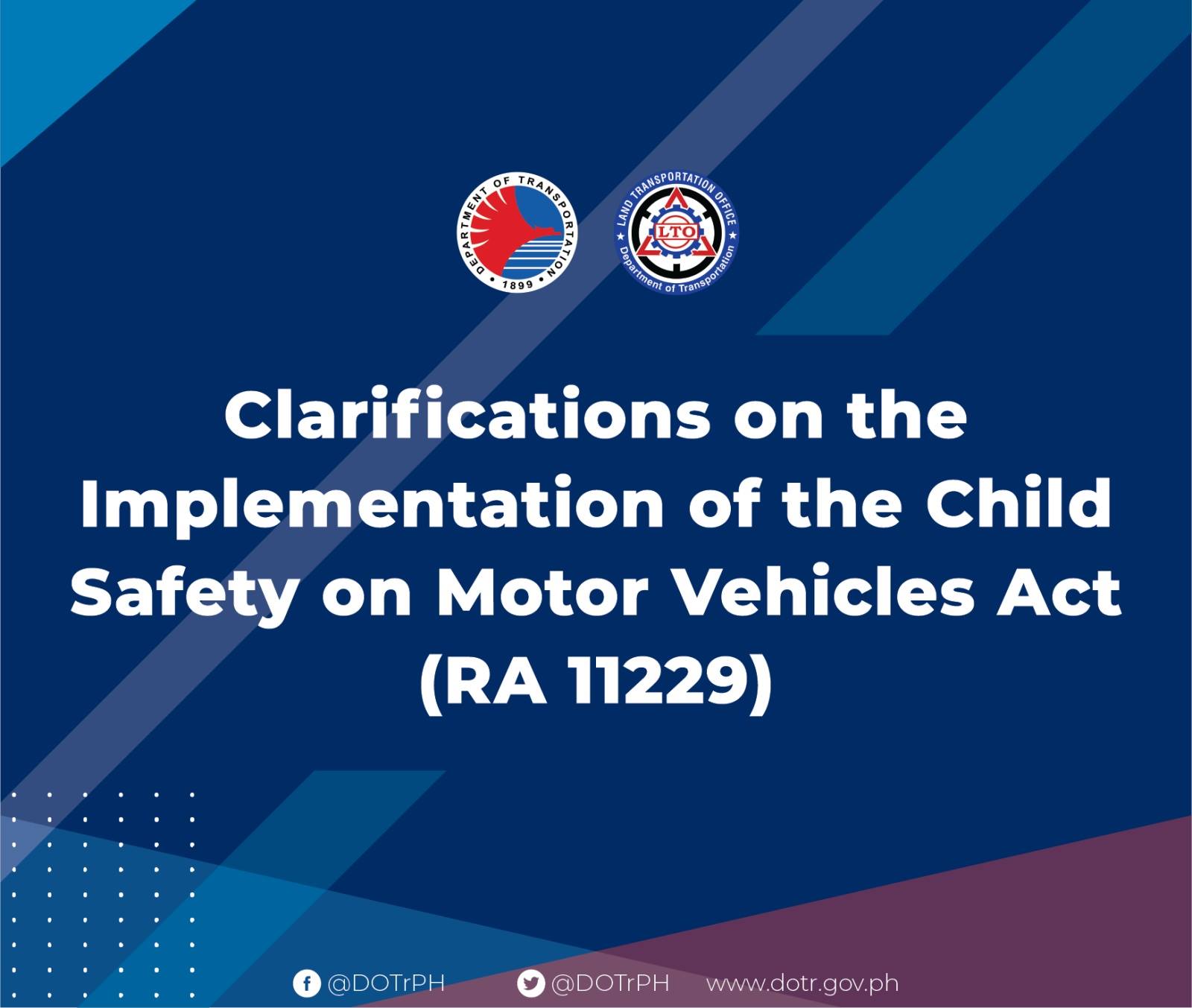The DOTr, on its official Facebook page, recently issued clarifications on the implementation of the Child Safety on Motor Vehicles Act (RA 11229), which mandates the use of a Child Restraint Seats (CRS) when transporting a 12-year-old (or younger) child or group of children. Check them out below:

-The Child Safety in Motor Vehicle Act or RA 11229 is a LEGISLATED and APPROVED LAW that passed through Congress and signed by President Duterte in February 22, 2019, while the Implementing Rules and Regulations (IRR) was approved last December 23, 2019 and took effect on February 2020.
-This is not just a policy or rule implemented by the DOTr nor LTO on its own volition.
-RA 11229 specifically determines the age and height of the child to be covered, as well as the standard of child restraint and penalties to be imposed on violators.
-Since it is a new measure, a transitory period of one year was provided before the mandatory compliance as stated in the IRR. Hence, its effectivity today is BY OPERATION OF LAW.
-The drafting of the IRR underwent a series of public consultations with parents, guardians, among others. The IRR itself was a product of a multi-stakeholder collaboration – various NGOs, CSOs and private sectors were involved in the formulation of this policy.
-Its primary intention, as a matter of state policy, is to uphold the safety of children while aboard motor vehicles.
-A World Health Organization (WHO) study on seat belts and child restraints states that the correct installation and usage of car seats can reduce the risk of death for infants by 70 percent, and 47 to 54 percent for children aged 1 to 4 years old in a road crash incident.
-As stated in RA 11229, the DOTr and LTO will ensure that the provisions on the safety and welfare of infants and children and prevent traffic-related deaths and injuries, including adequately, consistently, and objectively require, regulate, promote, and inform the public on the use of child restraint systems in motor vehicles, and regulate the same access to safe, appropriate, quality and affordable child restraint systems, are in accordance with international standards accepted by the United Nations.
-However, in consideration of the current pandemic, and until a comprehensive information, education, and communications (IEC) campaign is executed in close coordination with NGOs, CSOs, and agencies such as PIA, DepEd and DOH, the DOTr and LTO favor the deferment of its full implementation in terms of enforcement.
-The LTO initially scheduled an Enforcement and Communications Planning Workshop on the Implementation of RA 11229 on March 19-20 last year. However, it was cancelled due to the pandemic and quarantine impositions.
-Part of the planned IEC campaign is the roll out of the information regarding the law, targeting teachers/school officials, children, medical practitioners and manufacturers/retailers/importers, among others. With the lockdown and limitations in the conduct of activities and travel, the initial plan to conduct a nationwide IEC did not push through.
-Currently, the LTO is in the process of finalizing enforcement protocols, considering that special training is needed due to the involvement of children.
-Last week, LTO emphasized, during an online press briefing, that violators will have no fines for now and will initially be warned and given information materials about the law. According to LTO, issuances of fines/ imposition of driver’s license demerit points may be done in three to six months.
-Both the DOTr and LTO are in agreement that a deferment of the full implementation/enforcement of this new rule is warranted, especially given our current economic situation amid this still raging pandemic.
-A press conference shall be held by the DOTr road sector later today, and the matter of focusing first on the IEC campaign in coordination with LTO, and other agencies identified in the IRR for a more effective and coordinated implementation shall be discussed.
ALSO READ: Child Safety in Motor Vehicles Act: 5 Facts You Need to Know
source: DOTr Facebook page

